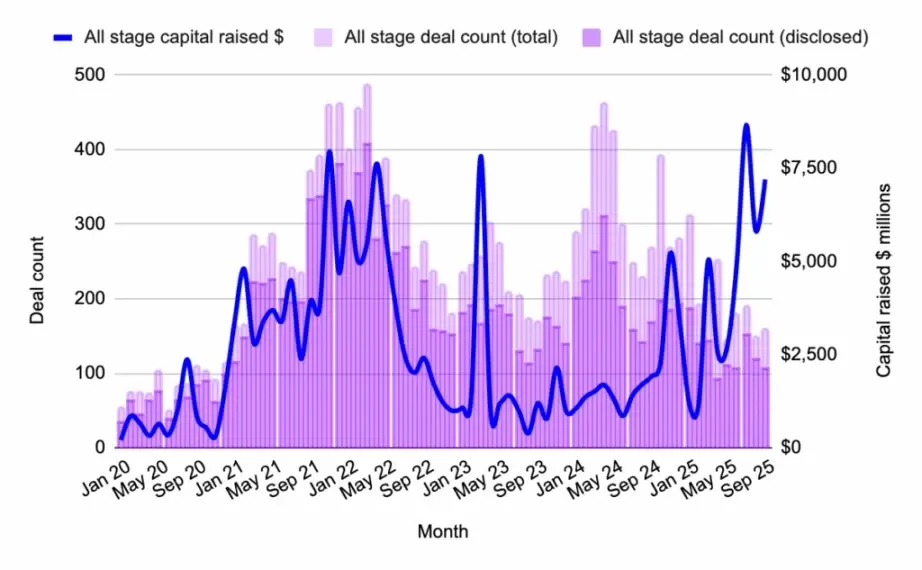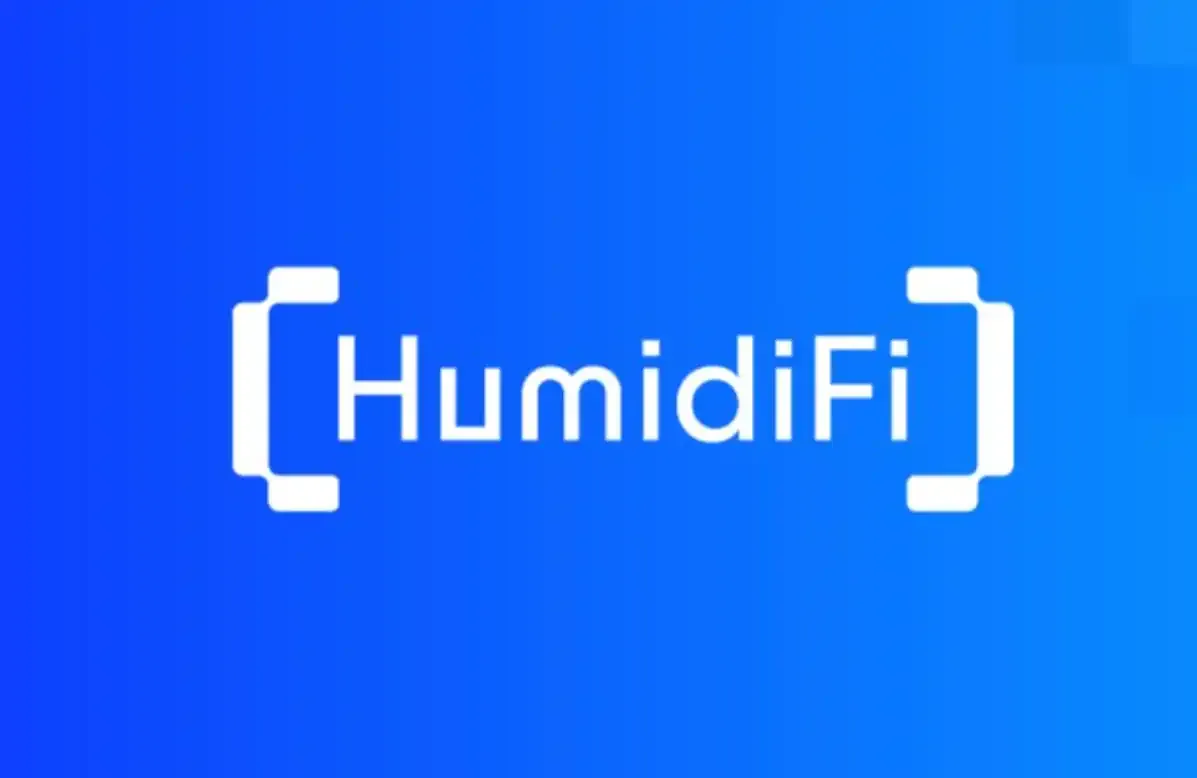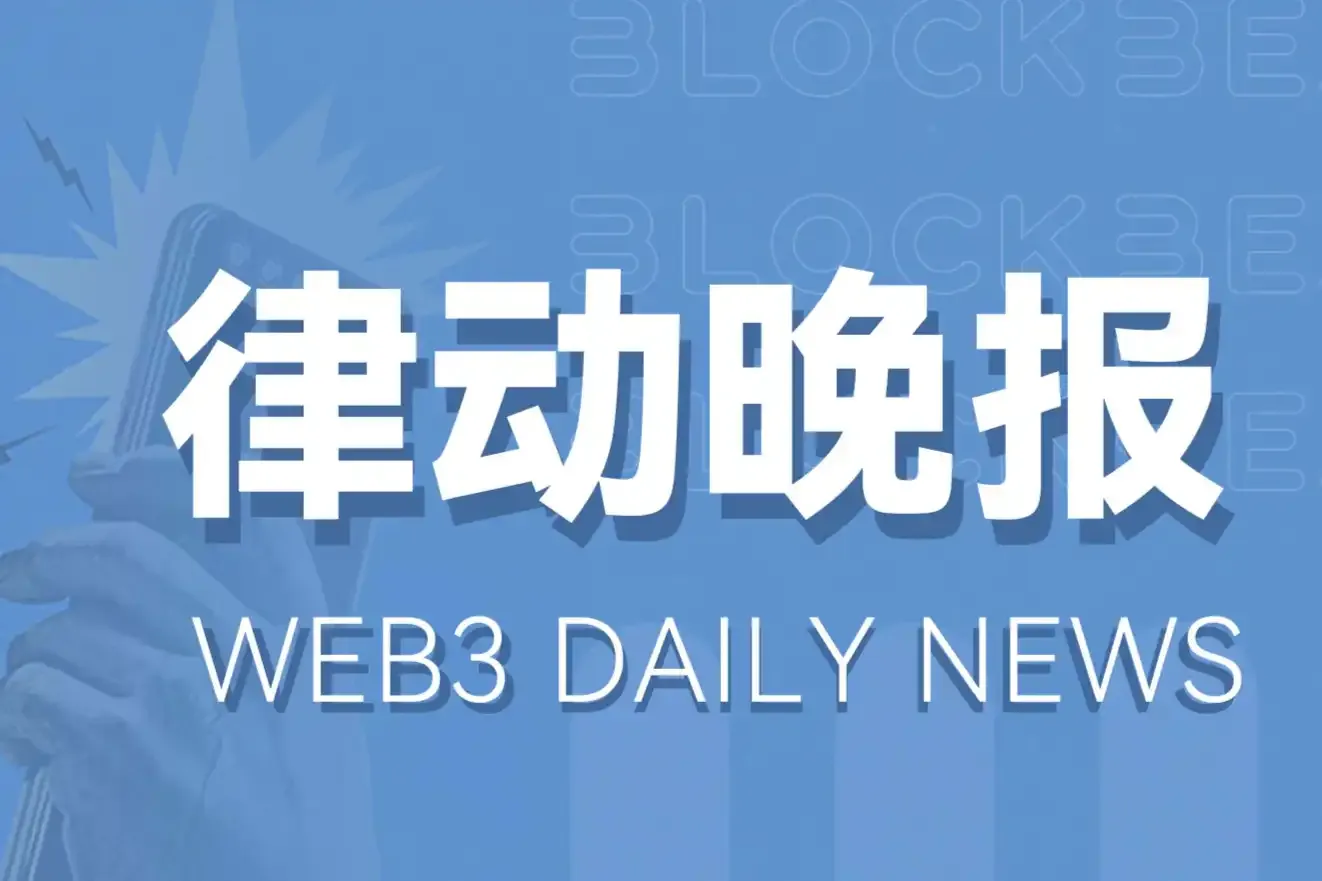Original Title: 11 Potential Crypto Narratives in the next 6 months
Original Author: @PinkBrains_io
Translated by: Peggy, BlockBeats
Editor's Note: In the crypto world, narratives are the steering wheel of capital. This article outlines the 11 most noteworthy crypto narratives to watch, presenting the latest dynamics and potential tracks in the crypto ecosystem.
In the face of a rapidly rotating market, rather than chasing every rise, it is better to select a few narratives, conduct in-depth research, and lay out strategies in advance. I hope this article provides you with a clear perspective for observation and action.
Here are the breakdown analyses of the 11 crypto narratives worth paying attention to.
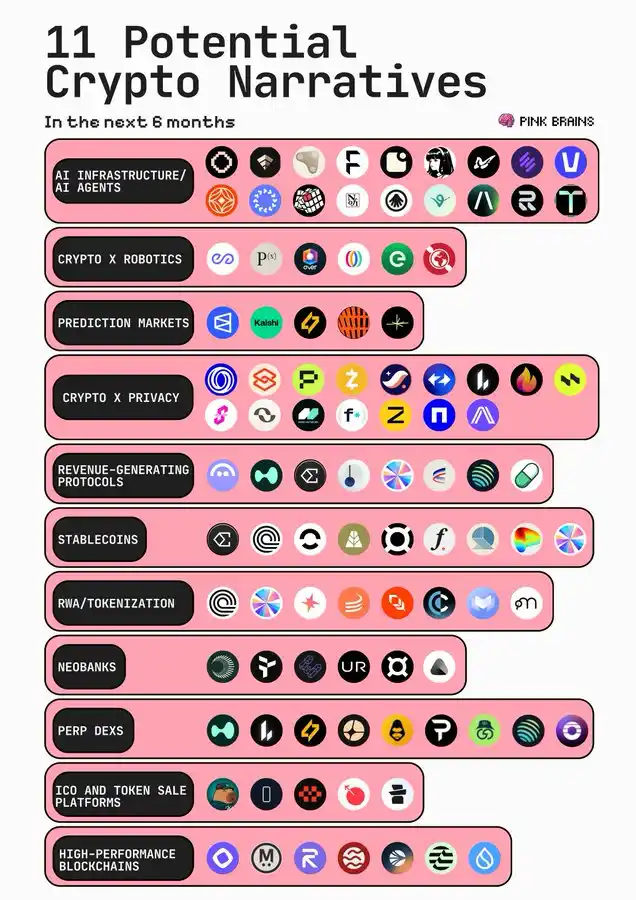
AI Infrastructure and AI Agents
Crypto x AI is no longer just "AI tokens following Nvidia (NVDA) up." The core question now is: "Who owns the computing power, who owns the data, and who owns the agents?" This is a battle for ownership.
Two important sub-narratives:
Decentralized AI infrastructure / computing power / training networks
Representative projects include: OpenTensor, Gensyn, Kite, Flock, Fraction, Nous, Prime Intellect, Vana, etc.
On-chain AI agents: tradable, executable, and reward-earning
Representative projects include: Mode, OpenServ, PlayAI, NOF1, Allora, etc.
The latest catalysts are ERC-8004 and x402.
ERC-8004: Ethereum developers are standardizing AI agents as tokenizable objects. ERC-8004 allows you to create an AI agent like minting an NFT, attaching a reputation score on-chain, and enabling delegation operations.
x402: An open payment channel for agents built by Coinbase, used for processing payments. This mechanism supports micropayments, API access, and can complete settlements without intermediaries—Gartner predicts that by 2030, the scale of such economies could reach $30 trillion.
This new narrative is just one example of AI agents achieving product-market fit. They have more practical PFM (personal financial management) application scenarios in the real world, such as trading, automated research, e-commerce, etc.
Projects worth noting in the AI agent track include: Virtuals, Almanak, Recall, Talus Labs.
In the broader crypto x AI narrative, the following directions can be focused on:
AI financing platforms: USDai, Gaib
Decentralized identity: Worldcoin
AI is still an emerging track in the tech field, and more projects will emerge in the future. It is recommended to follow @Defi0xJeff for the latest developments in the AI field.
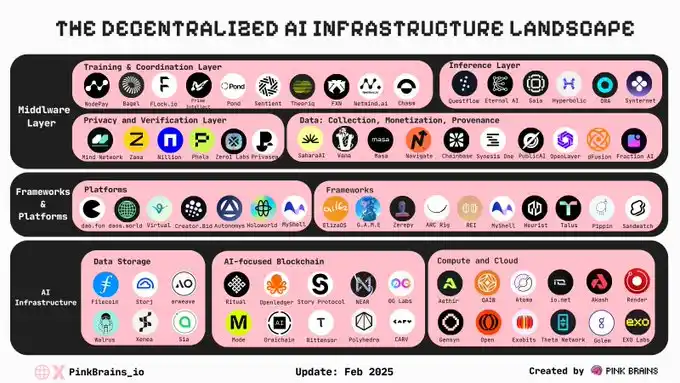
Robotics
Robotics may become another "aha moment" in the crypto space.
Web2 is investing billions into this track, while the total market cap of the crypto market is only $440 million. Project 1X has just opened pre-orders for NEO home robots, priced at $499 per month or a one-time payment of $20,000.
Starting next year, people may have humanoid robot companions to assist with various tasks at home (and very efficiently).
The bullish logic of the crypto x robotics narrative is simple: real-world applications require high-quality data, reliable multi-robot systems, and lower hardware costs.
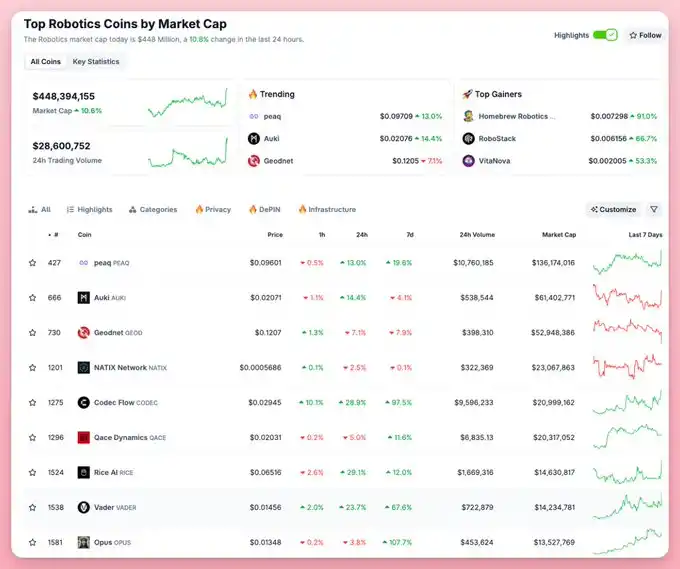
New crypto projects are addressing these challenges:
Peaq: Provides machine IDs and payment systems for autonomous robots. In Hong Kong's "robot farm," robots are responsible for planting and selling crops, with income paid to NFT-based farm owners. This is a typical case of robot cash flow → token revenue.
PrismaX: Builds a data marketplace that connects human operators with robots through remote operation.
OVR: Users can scan real spaces with their phones or 360° cameras and earn token rewards. Its spatial data of over 150,000 locations and 70 million images helps robots recognize and navigate new environments.
Sui Network: Demonstrated multi-robot collaboration. Sui uses the Mysticeti consensus protocol, supporting ultra-low latency consensus mechanisms and dynamic object management.
OpenMind AGI: Supported by Pantera Capital, is building "the Android system for robots." Its OM1 operating system allows a personality to run across all types of robots.
Edge Network: Builds a decentralized AWS for edge computing and robot reasoning hardware, integrating DePIN infrastructure.
GEODNET: A decentralized RTK network providing centimeter-level positioning data, offering precise layer support for the robotic economy.
Prediction Markets
Prediction markets are going mainstream during the 2024 U.S. presidential election, led by Polymarket and Kalshi, with monthly trading volumes reaching billions of dollars.
Although there were doubts about whether the post-election heat would fade, by 2025, trading volumes had grown nearly fivefold, approaching historical highs.
There are many catalysts for crypto prediction markets:
The parent company of the New York Stock Exchange announced plans to invest up to $2 billion in Polymarket, with a pre-trade valuation of about $8 billion.
Polymarket acquired the CFTC-licensed clearinghouse QCX for $112 million, allowing it to legally operate again in the U.S.
The NHL (National Hockey League) signed multi-year partnership agreements with Kalshi and Polymarket, granting them official data, brand usage rights, and broadcast exposure.
Key projects worth noting in this track include: Polymarket, Kalshi, Myriad Markets, Opinion Labs (supported by YZi Labs).
Other platforms, except TryLimitless, have not issued tokens yet, making them worth trying.
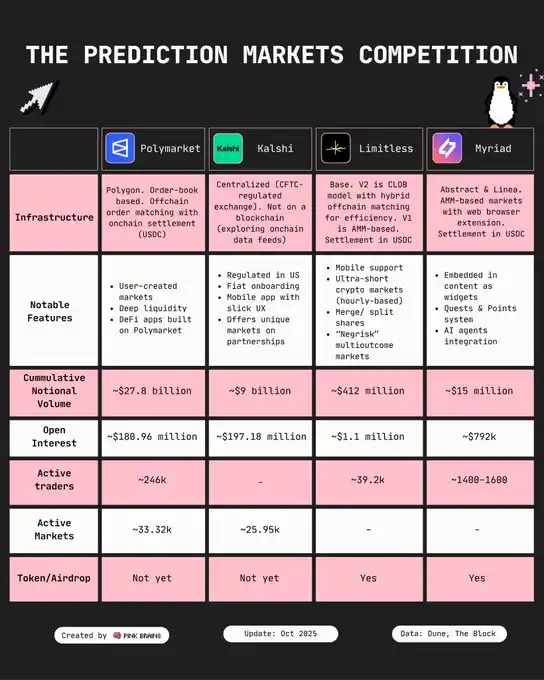
Privacy
With the widespread adoption of Web3, the demand for on-chain privacy is also growing.
Currently, there are three main technological paths to achieve on-chain privacy:
Trusted Execution Environment (TEE): Similar to a hardware vault, used to run sensitive code. Smart contracts or applications can execute logic in a secure chip, which cannot be peeked at from the outside. Representative projects include: Oasis Protocol, Secret Network, Phala Network.
Zero-Knowledge Proof (ZKP): Provers can prove a statement is true to verifiers without exposing the underlying data. ZKP is widely used in blockchain, Rollup, decentralized exchanges, crypto cards, and tools. Representative projects include: Zcash, Polygon, Starknet, zkSync, Lighter, Hibachi, Payy. ZKP infrastructure projects include: Succinct Labs, Boundless.
a16z also emphasizes that ZKP is a key infrastructure for blockchain privacy and scalability.
Fully Homomorphic Encryption (FHE): Allows computation on encrypted data without decryption. It supports running any logic (such as smart contracts, analytics, etc.) in an encrypted state, making it an ideal technology for "default privacy" systems. Representative projects include: Zama, Mind Network, Fhenix.
Other privacy supercomputing infrastructures: such as Nillion, Arcium, focus on building underlying capabilities for privacy computing.
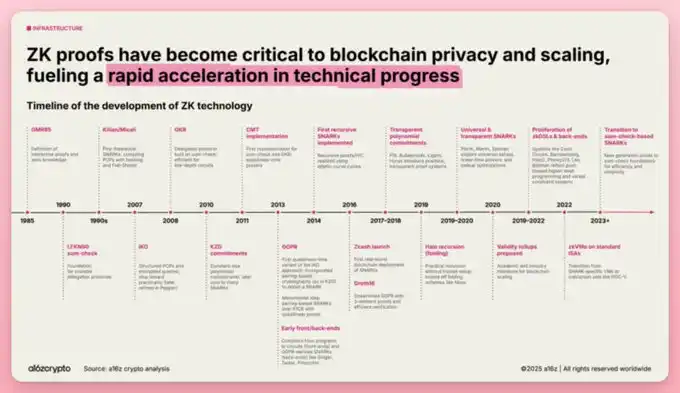
Revenue-Generating Protocols
In September alone, DeFi protocols generated approximately $600 million in fees.
Uniswap: Governance is publicly advancing the "fee switch" mechanism.
Aave: Has officially directed surplus funds into reserve and buyback mechanisms, with governance beginning to focus on cash flow.
Hyperliquid: A typical representative of this track. Annual protocol revenue is about $1.2 billion, with approximately $99 million in revenue over the past 30 days, of which about 95% is used to buy back its token $HYPE and reward holders.
GMX: Has spent over $20 million this year to buy back about 13% of its token supply, returning value to stakers.
Last year, the market was dominated by "meme coins," while this year places more emphasis on fundamentals. The real winners are those projects that can convert real income into token value, achieving growth through a "buyback-burn flywheel."
You can track project revenues and holder returns through platforms like DefiLlama, Dune, and Token Terminal. Key projects worth noting in this track include: $HYPE, $AAVE, $ENA, $PUMP, $SKY, $AERO, $JUP.
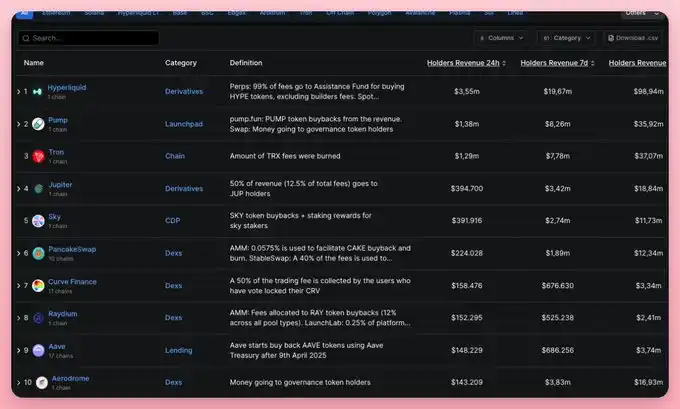
Stablecoins
After the passage of the GENIUS Act, stablecoins officially transitioned from the gray area into the U.S. federal payment system.
According to reports, after the passage of the GENIUS Act, the payment volume of stablecoins increased by about 70%, as businesses can finally operate dollar payment systems on-chain more safely and efficiently.
According to a16z's report, stablecoins can further strengthen the global dominance of the dollar against the backdrop of a surge in U.S. Treasury bonds and a decrease in foreign demand for U.S. debt.
Stablecoins are also merging with RWA (Real World Assets): new "yield-bearing stablecoins" have emerged, supported by tokenized U.S. Treasury bonds and other RWAs. This leads us to the next section on the RWA narrative.
The ecosystem of yield-bearing stablecoins is vast, and it is recommended to read related posts for a more comprehensive overview.
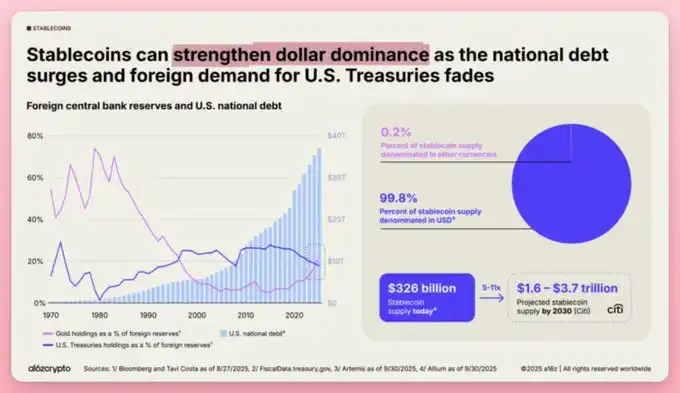
RWA / Tokenization
With the boom in stablecoins, RWA has seen strong growth this year, but as the world gradually moves on-chain, the wave of asset tokenization is just beginning.
Tokenized U.S. Treasury bonds have surged from $800 million to over $7.3 billion (as of September 2025), led by institutions such as BlackRock's BUIDL, Franklin Templeton, Ondo Finance, and Janus Henderson's JTRSY. Institutions are parking idle funds in tokenized Treasury bond funds for instant settlement and yield.
Sky and Spark are turning RWA into a flywheel mechanism: Spark channels billions of dollars in on-chain stablecoin liquidity into Treasury bonds and credit products, then flows the returns back into DeFi and its token economy.
The collateral mechanism is a key catalyst for RWA. Once perpetual contract DEXs, lending markets, and stablecoins start using tokenized Treasury bonds and credit assets as base collateral, RWA can become a core infrastructure of DeFi.
Not only Ethereum, but other chains like Solana, Avax, and Sui are also focusing on asset tokenization as a key development direction.
Notable RWA projects include: Maple Finance, Sky, Plume, Clearpool, Midas, Multiplifi, etc.
You can check the latest data in this track at RWA.xyz.
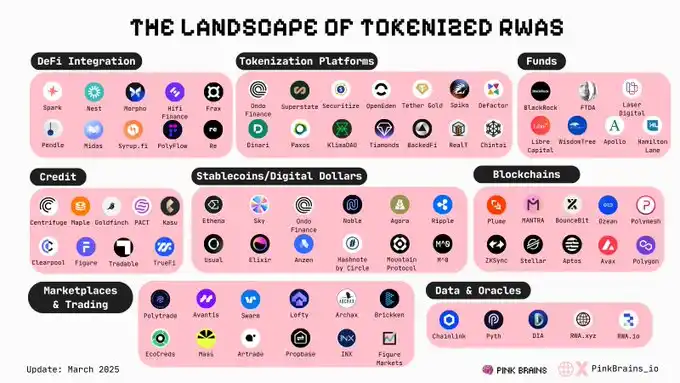
Neobanks
The adoption of stablecoin payments and cryptocurrencies by financial giants like VISA and Mastercard has driven a new narrative in the crypto space—neobanks.
Neobanks are competing to become the "global permissionless version of Revolut," but with self-custody, stablecoins, crypto assets, and reward mechanisms. They combine the convenience of traditional banking with the control of DeFi, allowing users to manage fiat and crypto assets on one platform.
Core features of neobanks include:
Integrated accounts: Savings, spending, transfers, and earning yields all done in one account.
Stablecoin-based: Using stablecoins like USDT, USDC, USDe as consumable currency.
Built-in channels: Instant conversion between crypto and fiat through linked cards, operating on licensed banks and compliant payment networks.
User control: Self-custody mechanisms ensure funds belong to the user.
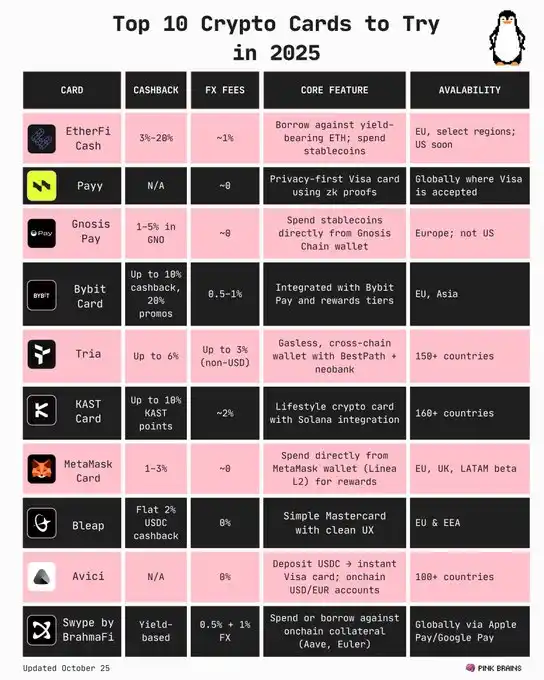
Representative projects include:
Plasma: The first neobank natively built on stablecoins, offering 4% cashback, 10%+ spending yield, zero-fee USD₮ transfers, all unified in one app, with virtual cards available upon registration.
Tria: A self-custody neobank based on Arbitrum, supported by Wintermute, the Ethereum Foundation, etc., offering virtual/physical cards, AI-optimized exchanges, gas-free cross-chain payments, and built-in yield strategies.
EtherFi: The fastest-growing stablecoin neobank, expanding re-staking into a fintech experience, with a TVL of $10.1 billion, a market cap of $629 million, and an FDV of $1.1 billion, supporting a 3% cashback credit card.
Avici Money: A fully on-chain, self-custody internet banking infrastructure that removes reliance on central banks while integrating fiat channels, supporting Visa cards and USD/EUR virtual accounts, allowing seamless conversion between fiat and crypto assets via Wise, SEPA, ACH.
UR Global by Mantle: A Swiss-compliant neobank connecting fiat in Asia with DeFi, zero withdrawal fees, free transfers, USDe providing 5% annual yield, supporting multi-currency accounts and Mastercard global payments.
Frax Finance: Building a stablecoin operating system, frxUSD is a Frax stablecoin compliant with GENIUS standards, FraxNet is its on-chain account system for minting, redeeming, and earning yields, and Fraxtal is its high-performance Layer 1 blockchain supporting asset issuance, settlement, and real-time yields.
Perp DEXs
In October 2025, decentralized perpetual contract trading volume surpassed $1 trillion.
HyperliquidX leads (approximately $294 billion), followed by Lighter (approximately $257 billion) and Aster (approximately $225 billion). The total monthly trading volume in this track exceeds $1.06 trillion.
Hyperliquid has essentially become a high-performance chain and launched its native stablecoin USDH. HIP3 enhances its financial capabilities, and the HyperEVM ecosystem has immense potential.
Lighter is in public testing, using a zkRollup + off-chain matching + on-chain settlement model, with matching speeds under 5 milliseconds, aiming for institutional-level latency while still proving settlements through Ethereum, making it a leader in the "CLOB on zkRollup" track.
Aster is a privacy-focused perpetual contract DEX on BNBChain supported by YZi Labs.
Perpetual contract DEXs are currently one of the strongest product-market fits (PMF) in the crypto space, but competition is also fierce.
The current bullish logic is airdrops. It is recommended to pay attention to emerging tokenless perpetual contract DEXs and the HyperEVM ecosystem.
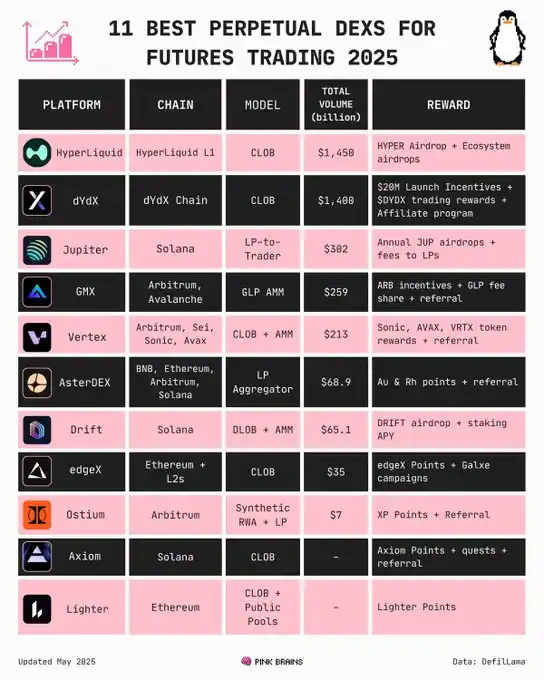
Token Sale Platforms
This is a track that has far less discussion than its potential. The 2021-style Launchpad is making a comeback, but with more gamified designs and a greater focus on KYC compliance.
Some standout ICO platforms include:
KaitoAI Capital Launchpad: Allocates funds in phases through social reputation, the Kaito ecosystem, and community consensus, with each sale being oversubscribed. Representative projects: Limitless, zkPass, Novastro, Hana Network, Theoriq.
Echo: Acquired by Coinbase for about $375 million, it raised over $200 million in 300 sales. Coinbase is integrating Echo to bring on-chain fundraising directly into its exchange. Representative projects: MegaETH, Plasma.
Legion: Scores allocations based on Clout + Degen + Dev metrics (social, on-chain, development). Recently successful sale projects include: Yieldbasis, Almanak.
MetaDAO: A governance + fundraising platform on Solana, evolving from "future governance as a service" to a launch platform for ownership tokens. It has raised nearly $18 million, with three recent projects (Avici, Umbra, Omnipair) being oversubscribed.
Buidlpad: One of the most active ICO platforms, with strong social activity. Representative projects include: Momentum, Falcon, Lombard, SaharaAI.
Jupiter Exchange will also launch an ICO platform in November.
The other extreme of token launch platforms is the Meme Launchpad, led by Pump.fun, as the internet capital market expands to multiple platforms.
However, the risks are also high, as most new tokens are just meme coins. A smarter approach is to support the platform rather than blindly chase tokens.
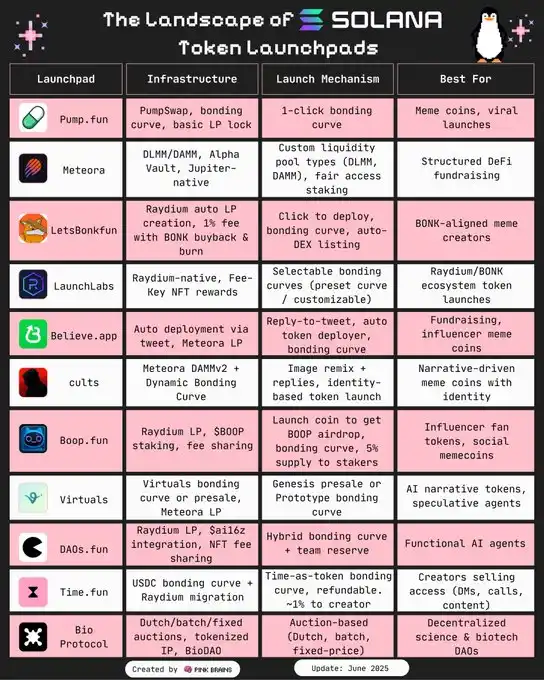
11. High-performance Blockchains
The scalability narrative has shifted from "cheaper than Ethereum" to "real-time, Wall Street-level throughput."
The goal of the new generation of high-performance blockchains is to support real-time applications, such as real-time perpetual contract order books, AI agent clusters, and settlement layers with Web2 speeds, all while not sacrificing Ethereum-level security and finality.
Monad: Fully EVM-compatible, supporting parallel execution, achieving about 10,000 TPS, 1-second block times, 0.8-second final confirmations, and reducing hardware costs through a custom architecture.
MegaETH: The first truly real-time blockchain, aiming for sub-millisecond latency and 100,000 TPS. It operates using a single ultra-fast sorter, with future plans to achieve decentralization through rotating sorters and fraud/fault proofs. Its $MEGA ICO was oversubscribed by 5.8 times, raising $275 million.
Rise Chain: The fastest Rollup-based chain, with a capacity of 100,000 TPS, a throughput of 10 Ggas/s, and a confirmation time of just 5 milliseconds. It is very suitable for CLOB perpetual contracts, high-frequency trading, and real-time AI collaboration.
These three chains are currently still in the pre-mainnet phase.
On the other hand, some other first-layer blockchains (L1) have already validated their performance on the mainnet:
Sei Network: An EVM-compatible L1 that uses parallel execution and the Twin Turbo consensus mechanism to achieve final confirmations under 400 milliseconds, aiming for over 200,000 TPS.
Aptos Network: Offers over 160,000 TPS and sub-second final confirmations, recently forming new partnerships with Google Cloud, Flowdesk, and others, and launching the Aptos Connect wallet layer.
Sui Network: Achieves about 130,000 TPS and approximately 480 milliseconds final confirmation, integrated into ecosystems such as Alibaba Cloud, BytePlus, and Playtron.
Sonic Labs: Reconstructed from Fantom, aiming for 400,000 TPS and sub-second final confirmations, and has launched a $150 million U.S. capital markets plan to support RWA and ETF integration.
In this narrative, the real winners will be the blockchain projects that can support killer applications, retain users, and achieve large-scale connections with Web2 enterprises.
The crypto narrative changes rapidly. Our advice is: do not try to chase every rise, but rather select a few narratives, conduct in-depth research, and lay out your strategy in advance.
免责声明:本文章仅代表作者个人观点,不代表本平台的立场和观点。本文章仅供信息分享,不构成对任何人的任何投资建议。用户与作者之间的任何争议,与本平台无关。如网页中刊载的文章或图片涉及侵权,请提供相关的权利证明和身份证明发送邮件到support@aicoin.com,本平台相关工作人员将会进行核查。
